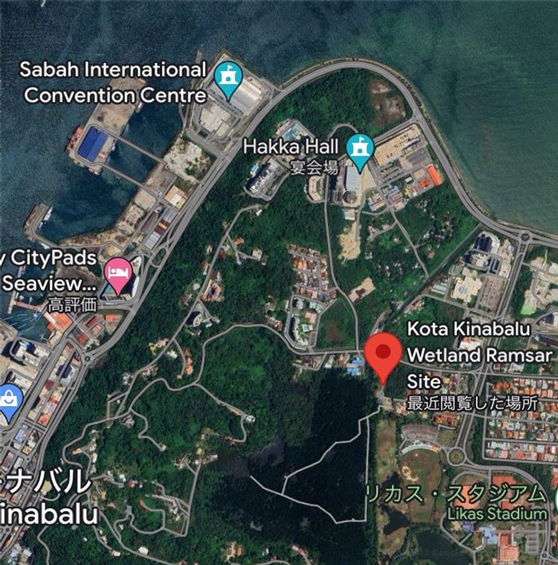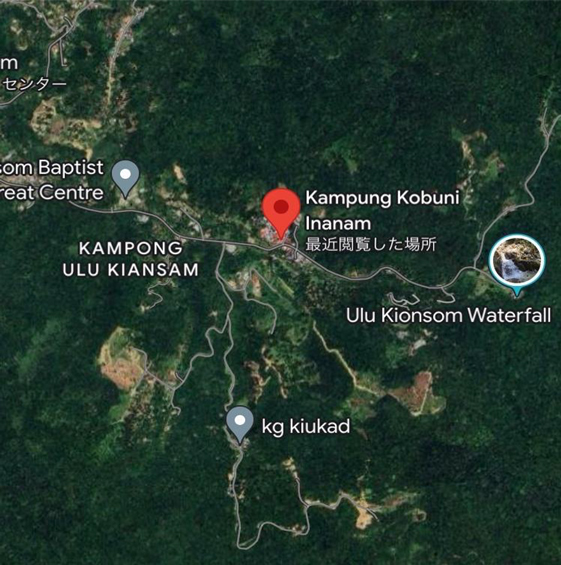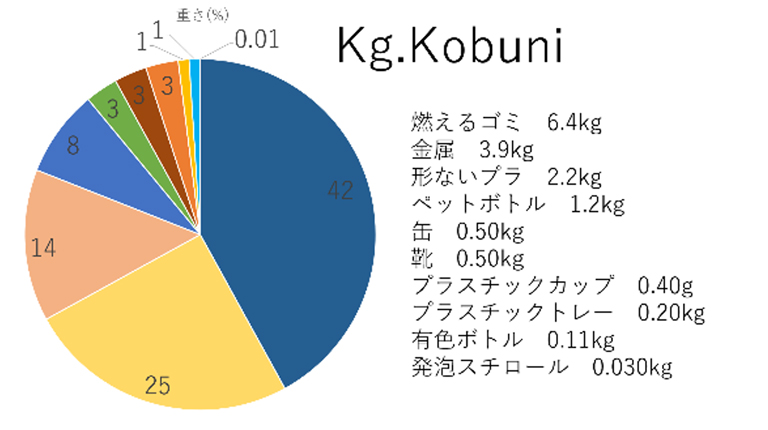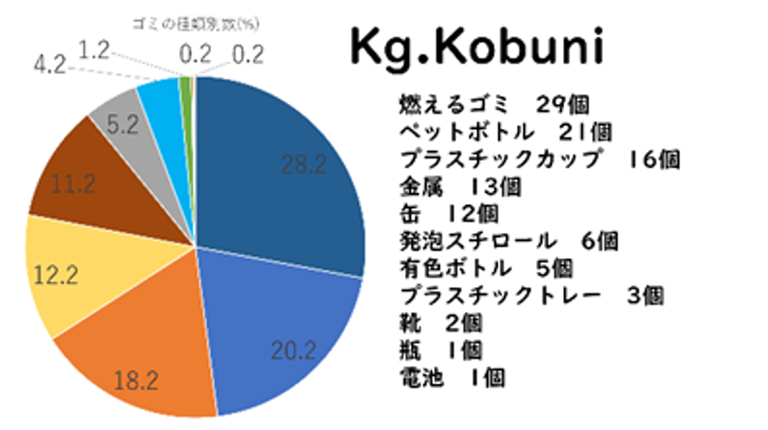マレーシア・サバ州
Sustainable 海洋プロジェクト
~未来の海を守る高校生イニシアティブ~
Clean Ocean Project by Students in Sabah and Akita (COPSA)
Sustainable Ocean Project in Sabah, Malaysia:
The Initiative of Secondary School Students to Protect the Future of Oceans
あきた地球環境会議は、マレーシア サバ州にて様々な環境活動を行ってきました。
2023年、マレーシアと日本でのグローバル環境リーダーを育成するための新しいプロジェクトが始動しました。
マレーシア サバ州の高校生を対象に、秋田で展開しているプラスチックごみ現況把握調査やそれに伴う環境教育をベースとし、地域文脈に則った環境保全と循環型社会形成、SDGs 達成のリテラシー向上を得た上で、加速度的な意識・行動変容の促進を目指す。更には、具体的かつ実践的なアプローチを用いた持続可能な海洋プラスチックごみ対策の定着を図る。また、マレーシア政府の意向や動向を反映した形の環境教育を通しては、マレーシアと日本でのグローバル環境リーダーが育成され、本事業がベストプラクティスとして波及することを目指す。
2023.10
本プロジェクトは2023年4月に、計画に沿ってスタート。
サバ州政府とCEEA間のMoUは、2023年10月に締結しました。
1年目
・サバ州の都市部および農村部におけるプラスチック廃棄物の状況を調査する。
・サバ州の学校における海洋プラスチック廃棄物問題に関する教育状況調査
・サバ州における海洋プラスチック廃棄物問題に対する作業チームを設立/開催する。
・ワーキングチームのメンバーは、日本を視察し優良事例を学ぶ。
・プロジェクトにおける活動の進捗状況についてディスカッションを行う。
活動1:「プラスチックごみ」に関する調査と対策提案
活動計画
◆サバ州におけるプラスチックごみに関する現況調査
①都市及び地方エリアの陸域ポイ捨てプラスチックごみ調査
②河川等自然トラップ機能を有する地点での現況把握
※マレーシア政府への意向・動向調査含む
活動2:「海洋プラスチックごみ」がテーマの環境教育
活動計画
◆海洋プラスチックごみに関する高等学校環境教育実態調査
①都市、地方エリアでの学校授業内容や頻度について
②教師及び高校生の海洋プラスチックごみ認識調査
活動3:Project 継続体制の構築
活動計画
①サバ州プラスチックごみワーキングチーム組織と運営
➤調査内容及び調査結果の評価検証
②訪日による先進事例視察研修Ⅰ:海洋プラスチックごみ対策
10月27日~11月2日
マレーシア 渡航
Activities were conducted in and around Kota Kinabalu, Sabah, Malaysia
Waste Composition Survey_3 locations /ごみ組成調査_3箇所
<Findings at KK WETLAND CENTER>(Left: number, Right: weight/左:個数、右:重量)
<Findings at Kg.DARAU >(Left: number, Right: weight/左:個数、右:重量)
<Findings at Kg. KOBUNI>(Left: number, Right: weight/左:個数、右:重量)
▶From the survey results /調査結果から
Many of the items were familiar and daily necessities, including plastic bottles and food trays. In the upstream areas, metal trash that appeared to have been illegally dumped was also collected, giving the impression that, unlike in Japan, there were few agricultural goods. Many of the trash entangled in the aerial roots of the mangroves were heavily degraded, highlighting the depth of the problem.
ペットボトルや食品トレーをはじめとする身近なもの、日用品が多かった。上流部では、不法投棄と思われる金属ゴミも回収され、日本との違いでは、農業用品が少ない印象を受けた。マングローブの気根に絡みついたごみの中には劣化が激しいものも多く、問題の根深さを浮き彫りにした。
Environmental education hearing survey for high schools and City /高等学校及び市等への環境教育ヒアリング調査
<1: SM St.Michael>
Basic information from the school
- All students:904 children ,Teachers :65
- We have 20 classes, but we use the hall and corridors because they are saturated.
⇒We would like to have 30 classes. - We have classes for grades 3-5 in the morning and grades 1-2 in the afternoon.
- Number of students: 26 students in science course (46 students in general)
- 6 classes per grade, social and scientific options in 3 years

学校からの基礎情報
- 全校生徒:904⼈ 教師⼈数:65⼈
- 20クラスあるが飽和状態なのでホール、廊下も使っている。
⇒本当は30クラス欲しい - 午前中に3~5年の授業を実施し、午後から1~2年生の授業を実施している
- クラス⼈数:理系26⼈(通常46⼈)
- 1学年6クラス 3年で⽂理選択
■Results of Interviews with Students
- The use of plastic should be stopped ⇒ Because it does not decompose and environmental problems are becoming more serious.
- We should have a sense of responsibility.
- We should be responsible.
- We can reduce plastic waste by bringing our own water bottles instead of using plastic bottles.
- We want to think about how we spend our time after school.
■生徒へのヒアリング結果
- プラスチックの使⽤をやめるべき ⇒分解されず環境問題が深刻化しているから
- 責任感を持つべき
- 海の資源がなくなる可能性があり、これは観光にも影響する
- ペットボトルを使わないで⽔筒を持参することでプラスチックごみを削減できるのではないか
- 私達は放課後の過ごし⽅について考えたい
■Results of Interviews with Teachers
- Teachers focus on water resources (e.g. air conditioning drainage)
- They are aware of the need for more field trips.
- Organize committees to maintain the garden, pick up fallen leaves, plant trees, etc.
■教師へのヒアリング結果
- ⽔資源に関する教育に⼒を入れている(エアコン排⽔など)
- 校外学習を多くするように意識している
- 委員会を組織して⇒庭の管理、落葉拾い、植物を植えている
<2: SM Datuk Peter>
Basic information from the school
- All students :1,428 :63 students in special classes
- Laptop computers for each student (windows)
- Environmental education is included in science and students learn how to protect the environment.
- Microplastic pollution and recycling are also taught.
- Recycling bins...not by rules but by autonomy. Not by rule but by initiative.
The collected items are collected by vendors. - We have a rule "No littering!

学校からの基礎情報
- 全校生徒:1428⼈ 特別学級へ通う生徒数:63⼈
- ノートパソコンが⼀⼈⼀台(windows)
- 理科の中に環境教育が含まれており、「どう環境を守っていくか」を学習している
- 「マイクロプラスチックの汚染やリサイクルについて」も学習している
- リサイクルボックス…ルールではなく⾃主性による。集めたものは業者が回収している
- 「ゴミをポイ捨てしない」というルールがある
■Results of Interviews with Students
- The environment outside the school area is not good.
- I think the general public is not very aware (but the students are very strong inside the school).
- There are clean-up activities in the school and at religious gatherings.
- The level of awareness of the Kota Kinabalu City Hall's initiative (to stop the free distribution of plastic bags on Saturdays and Sundays) was 27% (4 out of 15 respondents knew about it).
- The level of awareness was low, but there were comments that it was a good idea.
■生徒へのヒアリング結果
- 学校の地域外の環境は良くない
- ⼀般の⼈は意識が低いと思う(ただし、学校内(⽣徒)は⼤丈夫)
- 学校内、宗教の集まりでクリーンアップ活動がある
- コタキナバル市役所の取り組み(土曜日と日曜日のレジ袋の無料配布中止の件)の認知度合は27%(15人中4人は知っていた)。
- 認知度は低かったが、良いアイデアだという意見があった
■Results of Interviews with Teachers
- There is a school culture where many students are proactive and ask questions on their own initiative.
- The students were able to think about the fundamental differences between Japan and Malaysia in an easy-to-understand way.
- In each class, students were able to present their research on the environment in an easy-to-understand manner.
- The students learn about marine litter as a target and present and share the results of their research.
■教師へのヒアリング結果
- 積極的な生徒が多く⾃分から進んで質問してくる学校風土がある。
- ⽇本とマレーシアの間で根本的に違う部分を、わかりやすく考えることができた。
- 各クラスでは環境について調べたことをわかりやすく伝えることができる。
- 海洋ごみをターゲットに学習して研究成果を発表し共有している。
<3: SM St.Francis Convent>
Basic information from the school
- The oldest school in Kota Kinabalu with the motto "Green Clean Recycle".
- All students 771 students Teachers 49
- PCs are available for students to use in the PC room.
- There is an Environmental Day and "one plant per person donation to the school".
- We learned about garbage collection traps in geography class.
- The following environmental initiatives were introduced: planning and implementation, setting rules, participating in conservation activities, and educational activities.
- The school has been participating in the Selassie Awards (an environmental contest held throughout Sabah) for the past 20 years. The number of gardens has increased, and some positive effects have been seen.
学校からの基礎情報
- コタキナバル市で最古の学校であり、モットーは「Green Clean Recycle」
- 全校⽣徒:771⼈ 教師⼈数:49⼈
- パソコン:PC室で⼀⼈⼀台使える環境にある。
- 環境Dayが設けられていて「⼀⼈一つ学校に植物寄付する」ことなどが行われている。
- 地理の授業でゴミ回収トラップについて学習した。
- 実施している環境に関する取り組みとして「計画づくりと実践」「ルールを設ける」「保全活動に参加する」「啓発活動」などが紹介された。
- セラシ賞(サバ州全体で⾏っている環境コンテスト)へ20年前から出場している。庭園の増加など、一定の効果がみられる。
■Results of Interviews with Students
- We are active at home and on a personal level.
- We have fun at school with mini-gardens and beach cleanups at clubs.
- It's sad to see citizens littering.
- I think the area around the water village is dirty, even in the city.

■生徒へのヒアリング結果
- 私達は、家や個⼈でも活動している。
- 学校では、ミニガーデンやクラブでのビーチ清掃を楽しんで活動している。
- 市民のポイ捨ては悲しい。
- 街中でも⽔上集落付近は汚いと思う。
■Results of Interviews with Teachers
- We are educating people to "Love nature" and "Passing on to the next generation".
- We are also working to reduce the amount of waste we generate.
- Activities are carried out at the home and school level.
- Teachers think it is important to sustain education and start with what they can do.
■教師へのヒアリング結果
- 「Love nature」「次世代へ繋げる」を⼤切に教育している。
- エコバッグ、ストローをもらわないこと等、するべきことは小さいことから始める。
- 家、学校単位で活動を行う。
- 先生たちは、教育を持続していくこと、できることから始めていくことが重要と考えている。
■Impressions from Japanese High School Students
- All the students were nervous, but when they finally met the students, they immediately became friendly and exchanged valuable opinions, partly because of their close age.
- We had an upbeat and positive image of Malaysian schools.
- We were impressed by the enthusiasm of the students and learned a lot from them.
- The Malaysian students' research on marine litter was very interesting and we would like to work with them.
- The Japanese high school students felt the freedom of each school's culture and learned how to participate in environmental conservation activities.
- The Japanese high school students were very impressed with the content of the Malaysian high school research, which was unique to Malaysia.
■日本から渡航した高校生の感想
- 全員が緊張していたが、いざ⽣徒と対⾯すると年齢が近いということもあり、すぐに打ちとけ、貴重な意⾒交換をすることができた。
- マレーシアの学校に対する明るい前向きなイメージを持った。
- 生徒たちは皆熱心に活動している印象を得て勉強になった。
- マレーシアの生徒の海洋ごみに関する研究は大変興味深く、一緒に活動したいと考えた。
- ⾃由度の高い校⾵を感じ、環境保全活動にも参加している様子を学んだ。
- 研究内容はマレーシアならではの内容が多く、とても印象に残った。
The results of the research by the Akita Chuo High School students who travelled to Japan were reported at the Science Research Presentation Meeting attended by senior high schools (completed in January) and at the Research Presentation Meeting for all students held in February 2024. The high school students are now developing an educational programme for a marine litter project to be demonstrated in Sabah in the next year.
渡航した秋田中央高校生による調査結果は、
秋田の高校が参集するサイエンス研究発表会(1月終了)や、
2024年2月に開催された全校生徒対象の研究発表会で報告した。
現在、高校生は、次年度サバ州で実証する海洋ごみプロジェクトの
教育プログラムを作成している。

<4: DBKK>
■City Hall policies
-
Traps to collect litter in specific parts of the river.
Currently 7 locations have been set up and over 1 t of litter has been collected. -
Use of suburban communities
Communities that meet certain conditions (villages on the river, where there has been no waste collection system) are being used as pilot sites for the installation of incinerators and composters. -
Ask them to sort their waste into recyclable and non-recyclable categories and these are collected by contractors.
Previously, they were collected at shopping malls, but there were problems such as bad odour and rodent infestation.
-
Plastic bag reduction:
A project that started on 1 September 2023 and will run until 2024. Free plastic bags will be stopped on Saturdays and Sundays. The project is meant to raise awareness among the public. The project is meant to raise awareness among the public. Supermarkets are currently involved in the project.
-
Sustainability centres.
Trade-ins and repairs are carried out. Shoes, clothes, appliances and books are collected and sold at a discount (promotion of reuse).
-
Awareness-raising activities :
More than 10 projects a year. Educational awareness raising (photo below: courtesy of Kota Kinabalu City Hall), banner installation, Eco-bags, flea markets (free of charge), recycling events at schools, awareness-raising activities at exhibitions, etc.
■市役所の施策
- 川の特定の部分にゴミを集めるトラップを設置:現在7か所に設置し、1トン以上のゴミを回収している。
- 郊外のコミュニティの活用:一定の条件を満たしたコミュニティ(川に面した村、これまでゴミ回収システムがない)を試験地として焼却場やコンポスターを設置している。
- リサイクル可、不可に分別してもらい、それらを業者が回収:以前はショッピングモールなどで回収していたが、悪臭やネズミの発生等の問題があった。
- ビニール袋減らす:2023年9⽉1⽇からスタートした2024年までのプロジェクト。土曜日と日曜日にレジ袋の無料配布を中止する取り組み。市⺠への啓発の意味合いが強い。現在は、スーパーなどが活動に参加。
- 持続可能センター:下取り、修理を行っている。靴、⾐服、家電、本を回収して、安く販売(reuseの促進)。
- 啓発活動:1年で10以上のプロジェクトを⾏っている。教育啓発(下写真:コタキナバル市役所提供の写真)、バナーの設置、エコバッグ、フリマ(無料)のほか、学校でのリサイクル⼤会、展⽰会での啓発活動など。
| Question. | Answer. |
|---|---|
|
Do citizens separate their garbage? 市民は、ゴミの分別はしているか? |
Yes, on a trial basis in some areas. ⼀部の地域で試験的に行っている。 |
|
Do they not build a final disposal site? 最終処分場は作らないのか? |
Approval has not been granted. They are planning to wait for 5 more years because of the expansion of the Kayumadan Landfill. 承認が下りない。カユマダン最終処分場を拡張したため、あと5年は待つ予定。 |
|
Do you want to build an incineration plant for garbage? ごみの焼却場は作らないのか? |
Peninsular Malaysia is planning to do so with Japanese assistance. ⽇本の援助によって半島マレーシアでは計画中である。 |
|
Are the people of the city working on environmental issues? 市⺠は環境問題に関⼼を持っているのか? |
They do not have a landfill, so they are organizing a clean-up day. 持っていないため、クリーンアップDayを設けている。 |
|
About the cost of the incineration plant to be built on Gaya Island? ガヤ島に建設予定の焼却場の費⽤について |
A large corporation is sponsoring the project, and the other is using local residents' tax. ⼤企業がスポンサーについており、他には住⺠税を使っている。 |
■Future action plan.
- Install traps in the river.
- More activities in the suburbs (building an incineration plant on Gaya Island).
- Collect marine litter in cooperation with Japan (JICA project: plastic litter floating on the sea is collected by collection boats).
- Collecting rubbish from multi-storey houses.
- Waste oil treatment systems in each household (but with some cost issues).
■今後の取り組み計画
- トラップを川に設置する。
- もっと郊外での活動を行う(ガヤ島に焼却場を作る)
- ⽇本と協⼒して海洋ゴミの回収(JICAプロジェクト:海上に浮遊するプラごみを回収船により回収)
- ⾼層住宅からのゴミ回収
- 廃油処理システムを各家庭に(ただし、コスト面で課題あり)
■From the hearing
It was found that currently only a few places and areas are actively working on waste management (the scale of activities is limited). City halls need to cooperate in order to make their waste policies work. It was also found that awareness of garbage among citizens is not widespread throughout the city, so it is important to raise awareness.
We need to use the knowledge gained from this project and students' voices to create educational materials in order for CEEA to contribute to changing the mindset of people in Sabah.
■ヒアリングから
現在、ごみ処理に対して積極的に活動を⾏っている場所や領域は⼀部(活動の規模が限定的)である。市役所はごみ政策を機能させる必要があるため、協力が必要である。また、市中では市⺠のゴミに対する意識が広まっていないことが判明しており啓発が重要である。CEEAがサバの⼈たちの意識を変えることに貢献するためにも、今回得た知識や、⽣の声を教材作りに⽣かす必要がある。
<5: Kayu Madang landfill >
■Impressions of students after their visit to a final waste disposal site.
The first thing we saw for ourselves was a huge pile of rubbish. We knew that rubbish was being dumped in landfills, but we were surprised to find that there was a much larger quantity than we had imagined. We also felt a strong smell peculiar to rubbish, which we believe is caused by the fact that all the rubbish is collected in the same place. I felt more and more that it was necessary to take measures to reduce the waste itself, rather than landfilling it, as it could have a negative impact on the surrounding nature and animals. On the other hand, we also learnt that they have established a method for treating the waste water that seeps out of the rubbish and that they are doing everything they can to consolidate the rubbish in the same system. However, there are concerns about possible problems in the future, such as the usable life of the underground water shielding sheets.
■カユマダン最終処分場視察を終えた生徒の感想
私たちが最初に⽬についたのは⼤量に積み上げられたごみの⼭だった。ごみを埋め立てしているとは知っていたが、想像以上の量があり、とても驚いた。また、ごみ特有の匂いも強く感じ、全てのごみを同じ場所に集めていることが原因だと考える。周りの⾃然や動物にも悪い影響が及びかねないので、埋め立てるのではなく、ごみ⾃体を減らすための対策が必要だとより⼀層感じた。その⼀⽅で、ごみから染み出た汚⽔の処理⽅法が確⽴されていたり、同じ系統のごみでまとめていたりと、できる限りの対策を⾏っていることもわかった。しかし、地中に埋めてある遮⽔シートの使⽤可能年数など、今後問題になりうることが懸念点として考えられる。
| Question. | Answer. |
|---|---|
|
How is collected waste disposed of? 収集ごみは、どのように処分しているか︖ |
Weighing → Stacking → Flattening → Lamination 重量を計測→積み上げる→平らにする→⼟をかける |
|
How is the water contained in the waste treated? ごみに含まれている⽔分の処理方法は? |
Leachate from the refuse is collected in one place by underground sheets and filtered. ごみから浸出した水は、地下にあるシートで1か所に集められ、ろ過される。 |
|
Is the capacity of this site large enough? この場所の容量は⼤丈夫なのか︖ |
A separate area is reserved in case the allowable amount is exceeded. 許容量を超えることを想定して、別の場所を確保している。 |
|
What are the most common types of waste in the collected waste? 収集ごみの中で多いゴミは︖ |
Plastics and metals, in that order, are collected and recycled by workers called waist pickers. Copper is the most expensive type of waste collected, but plastic is the most cost-effective. プラスチック、⾦属の順に多いが、それらは、ウェストピッカーと呼ばれる労働者によって回収され、リサイクルされている。回収ごみの中では、銅が⼀番高価だが、コストパフォーマンス的にプラスチックが⼀番多く拾われている。 |
|
Does anyone live in this disposal site ︖ Is it open 24 hours a day? この処分場内に住んでいる人はいるのか︖ |
They were there before the Corona epidemic. Rest areas remain. コロナ流⾏前まではいた。休憩スペースは残っている。 |
|
Is it open 24 hours a day? 24時間営業か︖ |
Yes. はい。 |
|
How much waste is collected each day? ⼀⽇のゴミの量は︖ |
800 t/day, 240-50 trucks a day bring in waste. 800t/⽇。1⽇240~50台トラックがごみを運んで来る。 |
|
What is the working situation here? ここでの労働について︖ |
Working hours are 8 hours (manager?). Yes. Around 100 employees. 労働時間は8時間(管理者?)。従業員は100⼈程度。 |
■From interviews and project experience CEEA has previously developed a 'Guideline on Household Waste Segregation and Collection in Kota Kinabalu' with DBKK as a counterpart. Within the project, it was concluded that continuous 'waste reduction' and 'environmentally conscious' awareness building among children is extremely important. The project aims to reduce marine litter by developing effective awareness-raising and environmental education on marine litter, making use of past experience in this area.
■ヒアリング及びプロジェクト経験から
CEEAでは、過去にコタキナバル市役所をカウンターパートとして、「ごみ分別回収ガイドライン」を策定した実績を有する。プロジェクト内では継続的な子ども達への「ごみ削減」と「環境配慮」意識醸成が極めて重要と結論づけられていた。本事業の海洋ごみに関しても、過去の経験を活かして、効果的な普及啓発と環境教育を展開することにより、海洋ごみ削減の実現を目指す。
Working team/committee meeting on the issue of marine plastic waste in Sabah.
2024.03
訪日研修
サバ州環境保護局・サバ公園局より7名が来日。
秋田県内の様々な企業・施設にてプラスチックリサイクルの現状やごみの分別回収のしくみ等を視察しました。
市役所表敬訪問の様子は秋田魁新聞にも掲載されました。
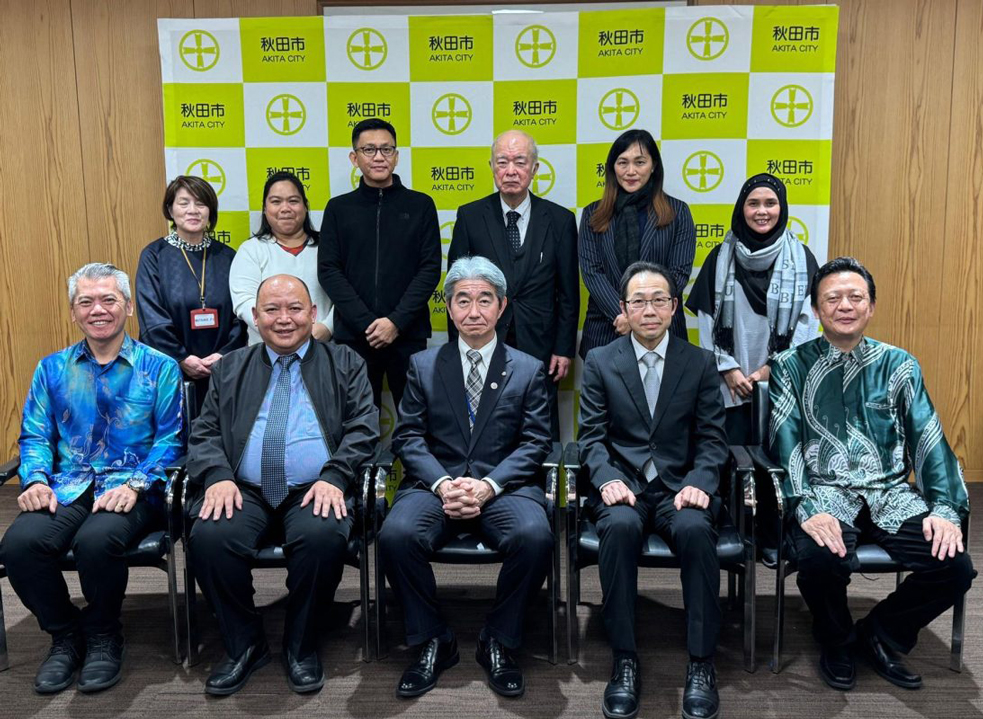
サバ州政府 秋田市市長表敬
Sabah, Malaysia Officials Visit to Akita City Hall
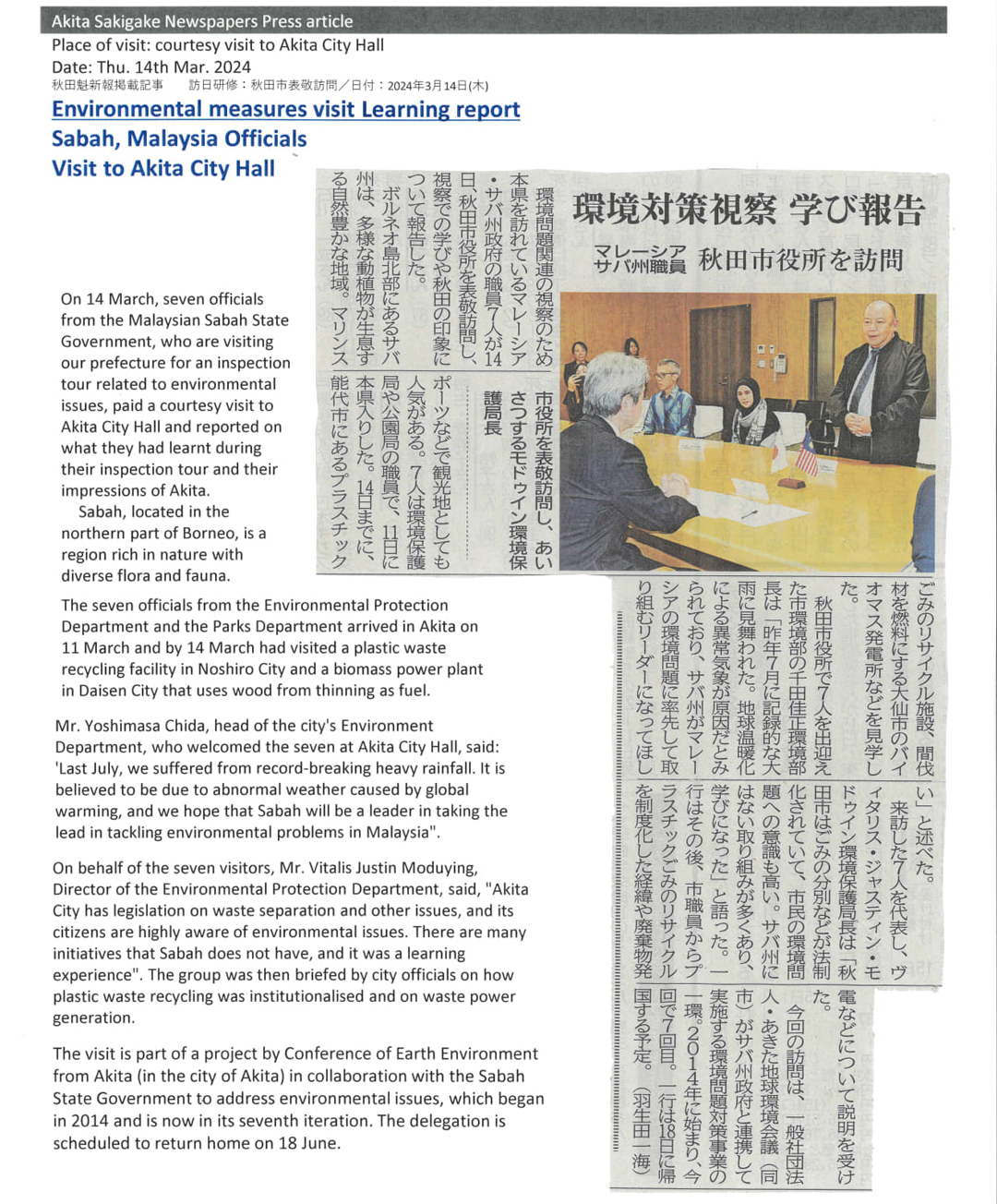 ( 秋田魁新報社 )
( 秋田魁新報社 )
-
訪日研修参加者報告書
訪日研修参加者報告書を見る
TRAINING REPORT FOR COPSA
Click Here
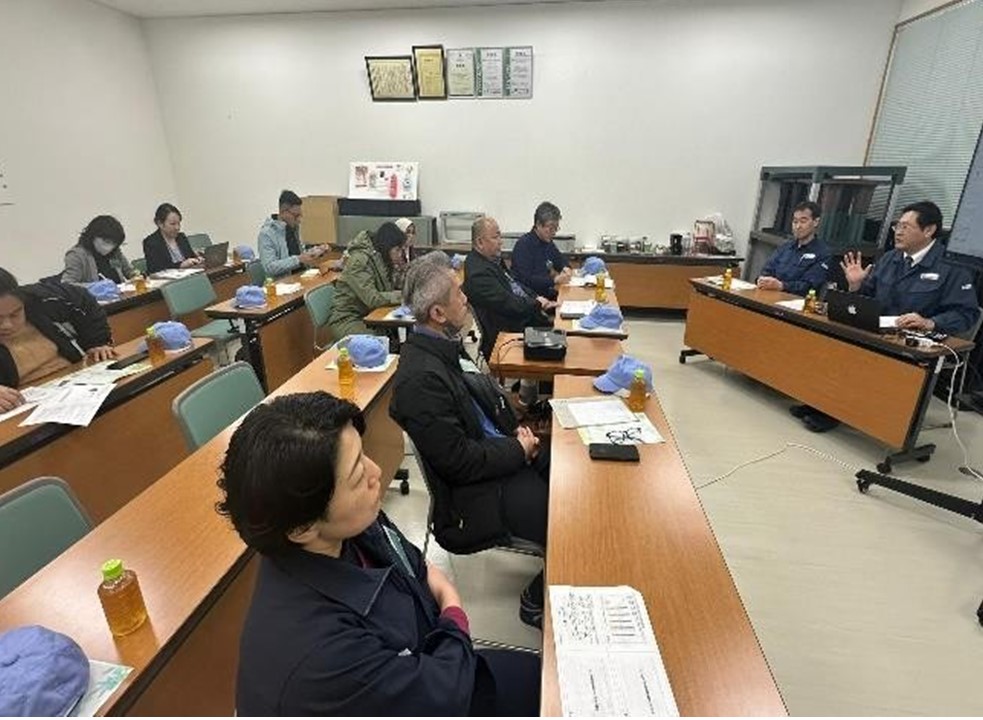
秋田エコプラッシュ株式会社
Akita Eco Plash
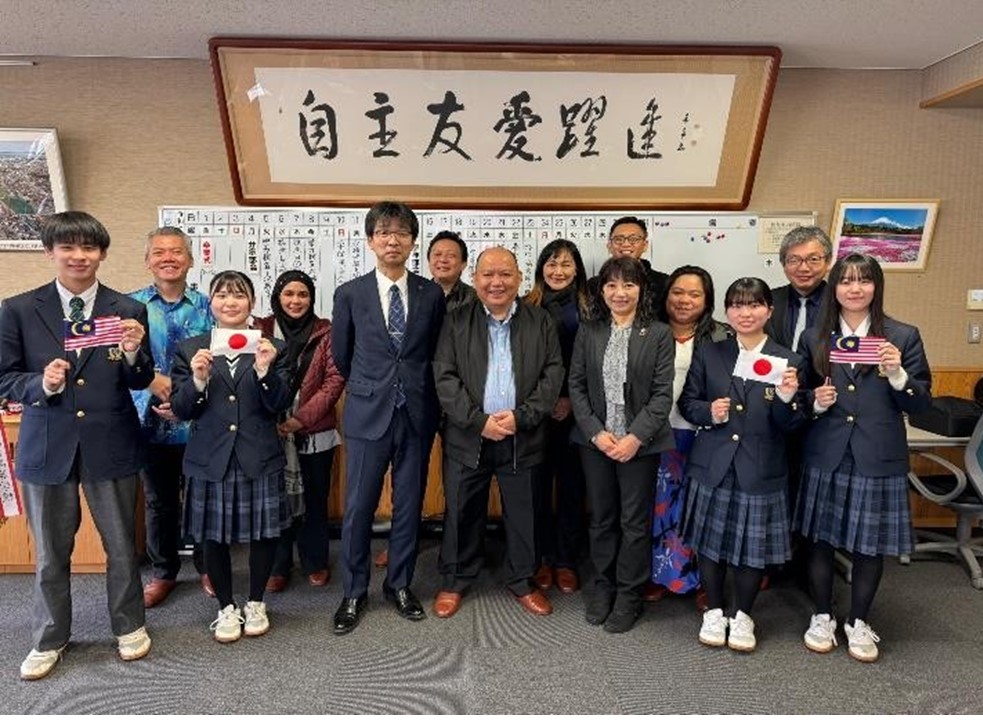
秋田中央高校
Akita Chuo High School (Presentationabout the school from students)
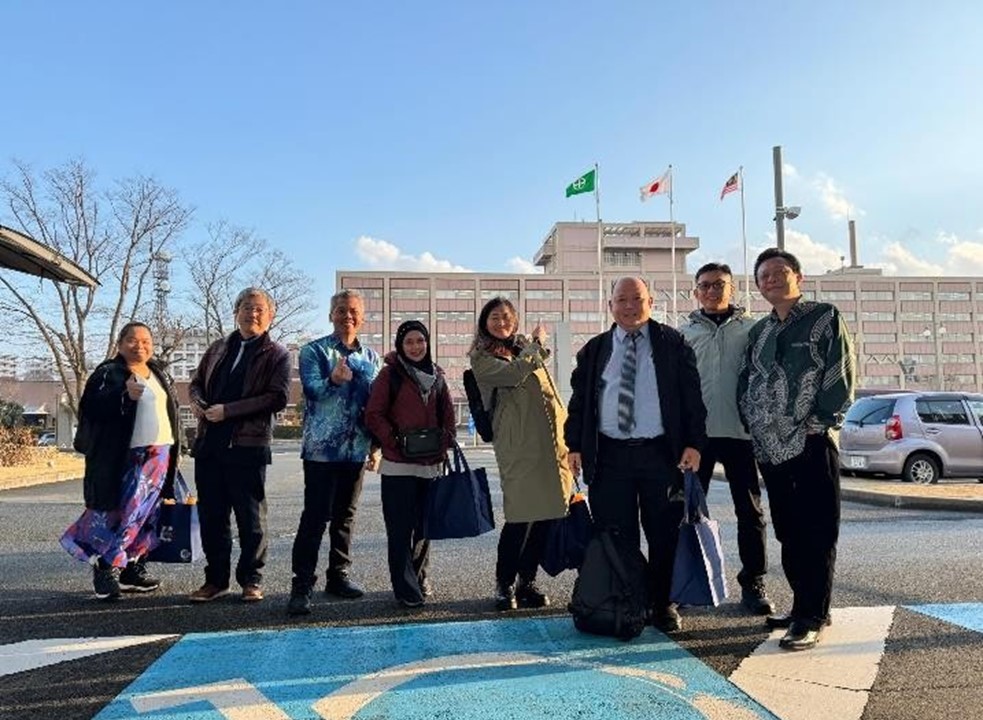
秋田市環境部
Courtesy visit with Director ofEnvironment
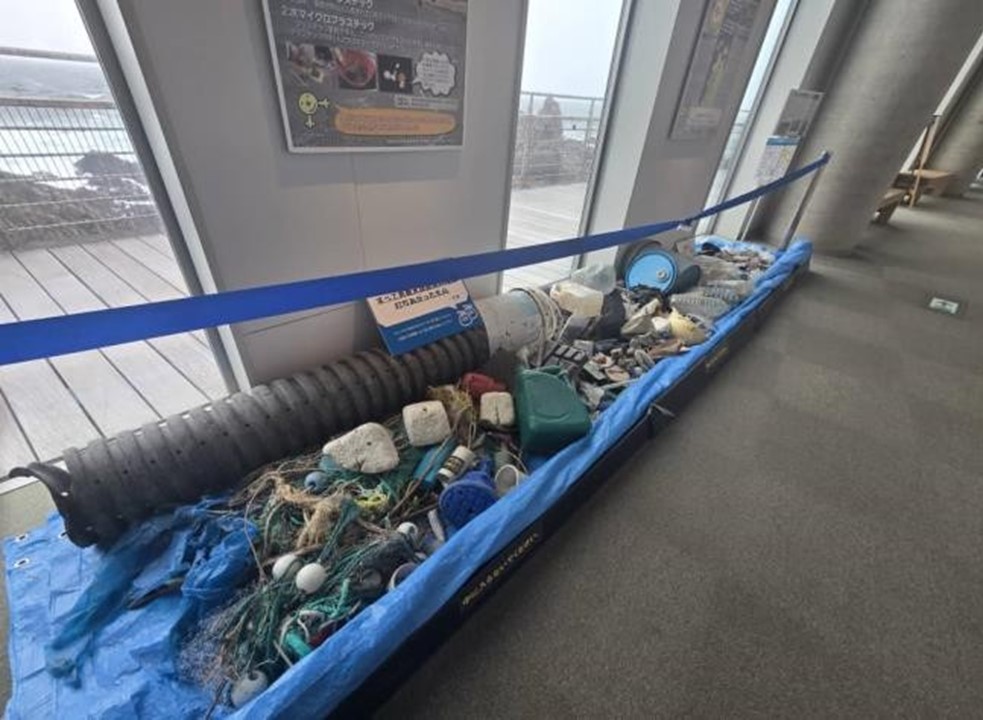
男鹿水族館GAO
Marine waste exhibits at OgaAquarium





